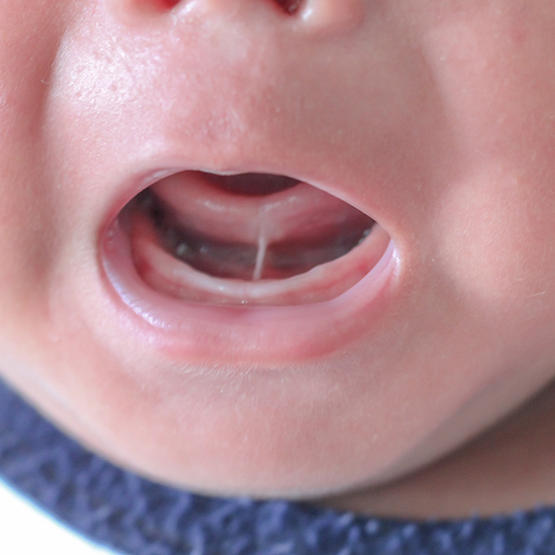Tongue Tie Treatment Boulder
Treating Tongue Ties and Ensuring Proper Development
A tongue tie is a condition that causes a person to be unable to move their tongue properly. Tongue ties can affect individuals of all ages, and these issues can cause several types of problems later in life, none of which you or your loved ones should want to endure! Continue reading below to learn more about what it means to have a tongue tie, and why it’s best to have the issue treated. Of course, don’t hesitate to give our team at Jesse Witkoff, DDS a call if you or someone in your family needs tongue tie treatment in Boulder.
Why Choose Jesse Witkoff, DDS for Tongue Tie Treatment?
- Treatment with a 90% Success Rate
- Laser Technology Provide Unparalleled Comfort & Efficiency
- Dr. Jesse is an Industry Leader & National Speaker on This Topic
What Is a Tongue Tie?

Beneath your tongue is a band of connective tissue known as the frenulum. Normally, this tissue supports the tongue and enables its full range of movement. However, sometimes the frenulum may be shorter than it’s supposed to be, resulting in a condition commonly referred to as a tongue tie. Patients with tongue ties aren’t able to move their tongues as freely as they should be able to, and needless to say, this can cause all sorts of problems.
It’s still not entirely clear what causes tongue ties to occur, but there appears to be a genetic component, and they affect from 10 up to 30% of all newborns, more commonly in males than females. Read more below to learn about the issues a tongue tie can cause, the symptoms, and the benefits of treatment.
What Are the Signs of a Tongue Tie?

Tongue ties are often noticed during infancy; babies with this condition tend to have significant trouble with breastfeeding and bottle-feeding, which often gives parents a clue that something’s going on. In a baby, it can cause a shallow latch, clicking sounds, and for them to swallow air. This leads to excess gassiness, reflux, and even colic. In mothers, it can cause a change in shape of the nipples, pain, and even damage.
As time passes, untreated tongue ties can lead to other issues, including feeding issues, speech impediments or the tendency to breathe through the mouth; it can also negatively affect those who participate in certain activities like playing wind instruments or singing in choir. It can contribute to poor sleep, resulting in symptoms that can be misdiagnosed as ADHD, in addition to symptoms of obstructive sleep apnea (OSA). Since the tongue is connected to the entire fascia system throughout the body, the ties can also cause neck and back pain as well as migraines.
What Should You Do About a Tongue Tie?

Do you believe that someone in your family has a tongue tie? If you suspect so, don’t wait to get in touch with our team as soon as possible. Dr. Witkoff can take a look inside the mouth and quickly confirm whether a tongue tie is present, as well as its severity. Once the problem has been diagnosed, it can be treated promptly. We can perform a laser frenectomy to remove the excess tissue and reshape the frenulum as needed, ultimately improving the mobility of the tongue.
The Benefits of Treating a Tongue Tie

Once the tongue tie has been resolved, it will be notably easier to successfully feed your infant. You can also expect their eventual transition to eating solid foods to be much smoother since their tongue will have its full range of motion. Meanwhile, treating tongue ties in older patients vastly improves their ability to speak clearly, and it can also relieve any discomfort that might have been associated with the condition (e.g. neck and back pain and obstructive sleep apnea). The bottom line is this: treating a tongue tie is very worthwhile, since it often leads to a significant improvement in many aspects of the patient’s life!

